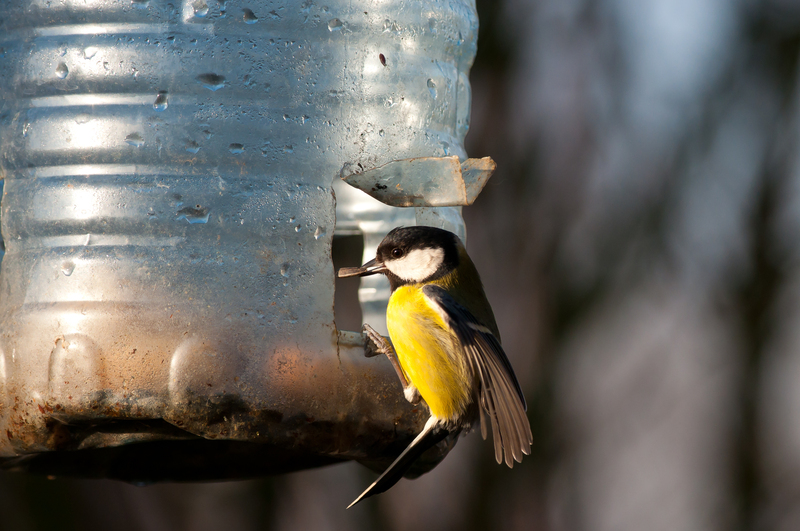Sustainable Creativity: Breathing New Life Into Everyday Discards
In today's fast-paced world, where consumerism often overshadows environmental awareness, sustainable creativity offers an inspiring solution to some of our most pressing ecological challenges. By exploring innovative ways to transform everyday discards into valuable objects, artworks, and functional creations, individuals and communities can actively contribute to a greener future while fostering personal and collective ingenuity.
Understanding Sustainable Creativity
Sustainable creativity is the practice of utilizing discarded materials or "waste" in creative and resourceful ways to produce art, useful items, crafts, or solutions that are environmentally friendly. This movement goes beyond recycling alone--it's about reimagining the potential of materials and applying imaginative thinking to minimize resource usage, reduce landfill, and combat the "throwaway culture."
Why Sustainable Creativity Matters
The world produces more waste now than ever before. According to the World Bank, the globe generates over 2 billion tons of municipal solid waste annually, with at least 33% of that not managed in environmentally safe ways. Plastic pollution, electronic waste, and even fast fashion contribute to mountains of rubbish that damage ecosystems and waste finite resources.
- Reduces landfill waste: Every creative reuse solution helps divert materials from overflowing landfills.
- Conserves natural resources: Giving materials a second life means less demand for new raw material extraction.
- Promotes conscious consumption: Sustainable creation challenges the mindset of disposable culture, urging us to value what we have.
- Inspires innovation: Working within the constraints of what is available requires unique problem-solving and fresh thinking.

Exploring the Spectrum of Everyday Discards
Before diving into the many ways you can be creative with waste, it's essential to recognize the broad variety of everyday discards available for transformation. Discarded items come in many forms, including:
- Packaging waste (plastic bottles, glass jars, aluminum cans)
- Old clothing and textiles (shirts, denim, bedsheets, curtains)
- Paper and cardboard (magazines, shipping boxes, paper bags)
- Electronics (old phones, wires, keyboards)
- Furniture and wood scraps
- Household items (broken ceramics, kitchen utensils, picture frames)
Instead of viewing these as mere trash, sustainable creators see a canvas for expression and a resource for ingenuity.
Popular Methods for Upcycling and Creative Reuse
One of the core practices within sustainable creativity is upcycling--the process of innovatively reusing discarded objects to create items of greater value or purpose than the original. Here are some popular approaches:
1. Art from Waste
Artists around the world harness discarded materials for visually stunning works, installations, and sculptures. From bottle-cap mosaics to metal scrap statues, art-from-waste demonstrates that beauty and meaning can emerge from what society discards.
2. Furniture Revamps
Repurposing wooden pallets, old cabinets, or broken chairs can result in chic, bespoke furniture pieces. Transforming a battered dresser into a stylish console or using reclaimed wood for shelving are popular ways to extend the life cycle of homewares.
3. Fashion Redesign
Upcycled fashion turns tired garments and textiles into trendsetting attire and accessories. Techniques include patchworking old denim into new clothes, or creating bags and hats from discarded fabrics. Brands and DIY enthusiasts alike are breathing new life into the fast fashion fallout.
4. DIY Home Decor
With imagination, glass jars become vases or lamp bases, while shipping pallets can morph into wall art or garden planters. Sustainable home decor elevates spaces while keeping materials out of the bin.
5. Educational Projects
Schools and community workshops are teaching sustainability through creative projects. Building birdhouses from cartons, robots from e-waste, or musical instruments from bottles, these projects nurture both environmental awareness and hands-on skills.
Inspiring Examples of Sustainable Creativity Worldwide
Many inventive individuals and organizations are spearheading the sustainable creativity revolution. Here are some standout projects that show the boundless possibilities when resourcefulness meets responsibility:
- Ocean Sole (Kenya): This social enterprise collects discarded flip-flops from beaches and turns them into vibrant sculptures, toys, and artworks. By employing local artisans, they address pollution and unemployment simultaneously.
- TerraCycle (Global): Known for tackling hard-to-recycle waste, TerraCycle partners with companies and communities to turn everything from snack wrappers to old toothbrushes into park benches, playgrounds, and more.
- Precious Plastic (Worldwide): This open-source initiative empowers people to build small-scale plastic recycling machines, turning common plastic waste into furniture, tools, and art.
- The Recycled Orchestra of Cateura (Paraguay): Using instruments made from landfill materials, this youth orchestra performs globally, proving that music and creativity can blossom from adversity.
How to Start Your Own Sustainable Creativity Journey
Ready to breathe new life into everyday discards? Here's how to embrace sustainable creativity in your daily life:
1. Rethink "Waste"
Whenever you're about to throw something away, pause and consider: could it serve another function? Is there a creative project it might be perfect for? Train your eye to see possibilities, not rubbish.
2. Gather Inspiration
Follow creative upcycling accounts on platforms like Instagram and Pinterest, or watch video tutorials for innovative ideas. From bottle cap mosaics to denim quilts, you'll discover endless inspiration.
3. Equip Yourself
A basic toolkit--scissors, glue, paint, needles, and a sewing kit--opens the door to myriad sustainable projects. Collect containers, textiles, and other materials for future use. Remember: safety first, especially for children.
4. Start Simple
- Turn glass jars into pen holders or planters.
- Make reusable shopping bags from t-shirts.
- Use cardboard boxes to organize drawers or shelves.
- Create art collages from magazines and packaging.
As your skills grow, challenge yourself with more complex creations.
5. Share and Celebrate
Document your process with photos and share your work online or with friends. Join sustainable creativity workshops or groups to connect with like-minded makers. Your journey may inspire others to embark on their own.
The Environmental and Social Impact of Creative Reuse
Eco-friendly creative practices don't just save materials from landfill; they help drive significant environmental and social benefits:
- Resource Conservation: Each item upcycled saves energy and resources required in manufacturing new goods.
- Pollution Reduction: Diverting items from incinerators or open dumps lowers emissions and prevents dangerous toxins from leaching into soil and water.
- Community Empowerment: Group projects such as community gardens from tyres, art murals from broken tiles, or public benches from plastic bottles foster collaboration and pride in local initiatives.
- Economic Opportunities: Social enterprises and creatives are building incomes--and even careers--through sustainable design, signaling a shift toward greener economies.
- Educational Value: Creative reuse in schools teaches children key lessons about sustainability, resourcefulness, and teamwork in action.
Overcoming Barriers to Sustainable Creativity
While the sustainable creativity movement is thriving, challenges remain:
- Awareness: Many people are unaware of the potential locked within their trash or may not realize how to get started with upcycling.
- Time and Resources: Not everyone has the time to devote to creative reuse, or the tools needed for complex projects.
- Sociocultural Perceptions: There may be stigma associated with using "waste" materials, especially in areas where newness is equated with status.
- End-of-Life Considerations: Even upcycled items need plans for responsible disposal after their useful life.
Solutions include educational campaigns, community workshops, sharing tools and spaces, and celebrating creative reuse success stories.

The Future of Sustainable Creativity
As environmental challenges mount, the need for innovative, sustainable solutions grows ever more urgent. The intersection of creativity and sustainability empowers us to view waste as opportunity, not burden. Emerging technologies--such as 3D printing with recycled plastics or digital platforms for sharing creative reuse ideas--are paving the way for even bolder transformations.
Designers are increasingly embedding principles of circularity into product development, ensuring that goods are designed for easy repair, disassembly, or upcycling at their end-of-life. As more brands adopt these measures, consumers will gain access to a wider array of sustainable options.
Conclusion: Transforming Trash into Treasure
From upcycled art to furniture revivals and creative fashion, sustainable creativity is more than a trend; it's a critical tool for building a responsible future. By nurturing the habit of seeing value where others see waste, we support environmental wellbeing, unlock hidden potential in everyday materials, and spark joy through the act of creation.
Call to Action: Next time you're about to throw something away, pause--can you breath new life into your discards? Join the global movement of sustainable creators and turn your trash into treasure.
Further Reading and Resources:
- Ellen MacArthur Foundation - Insights into the circular economy
- Make it Float - Projects focused on upcycling marine plastics
- TerraCycle - Global leader in hard-to-recycle waste solutions
- Pinterest - A hub for upcycling and sustainable DIY ideas
Embrace sustainable creativity today--your environment, community, and future self will thank you.
